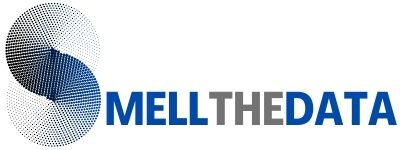Introduction
Imagine the vast oceans dotted with countless floating devices, many of which are traditional fish aggregating devices (FADs) made from plastic. A staggering statistic reveals that over 1 million marine animals die each year due to plastic pollution. The ISSF Technical Report 2018-07 addresses this pressing issue by examining the potential of biodegradable FADs. This report highlights the need for sustainable practices in fisheries, presenting key findings on the benefits, challenges, and recommendations for the adoption of biodegradable FADs.
Understanding Biodegradable FADs
Definition and Benefits
Biodegradable FADs are designed to degrade naturally over time, unlike traditional FADs, which can persist in the ocean for decades. These innovative devices are typically made from environmentally friendly materials, such as plant-based polymers or other natural fibers.
Benefits of Biodegradable FADs include:
- Reduced Environmental Impact: Less marine debris and harm to marine life.
- Sustainability: Supports sustainable fishing practices and reduces reliance on harmful materials.
- Improved Fisheries Management: Enhances tracking and data collection on fish populations.
Environmental Impact
The environmental benefits of using biodegradable FADs are significant. By minimizing plastic waste in oceans, these devices help preserve marine ecosystems. Moreover, they can lead to healthier fish populations and improved biodiversity. The use of biodegradable materials also encourages the responsible use of resources, aligning with global efforts to combat plastic pollution.
Challenges and Opportunities
Technical Hurdles
Despite their promise, biodegradable FADs face several technical challenges:
- Durability: Ensuring that FADs remain functional for adequate time while still being biodegradable can be difficult.
- Material Selection: Finding materials that are both environmentally friendly and effective for fishing operations requires extensive research.
- Design Complexity: Crafting designs that can withstand ocean conditions while remaining biodegradable adds to the complexity.
Economic Implications
The economic impact of adopting biodegradable FADs must be carefully considered:
- Initial Costs: While they may have higher upfront costs, long-term savings from reduced environmental cleanup and improved fish stocks could offset these expenses.
- Market Acceptance: Gaining buy-in from the fishing industry will be crucial for widespread adoption, necessitating education and outreach.
Regulatory Framework
A supportive regulatory environment is vital for the successful implementation of biodegradable FADs. This includes:
- Policy Development: Governments must create policies that encourage sustainable fishing practices.
- Funding and Support: Financial assistance for research and development can facilitate the transition to biodegradable technologies.
The ISSF Workshop
Participants and Objectives
The ISSF workshop brought together a diverse range of experts, including marine biologists, environmental scientists, and representatives from the fishing industry. The objective was to share knowledge and collaboratively explore the future of biodegradable FADs.
Key Discussions
Main topics covered during the workshop included:
- Design and Material Innovations: New materials and their potential for effective FAD construction.
- Implementation Strategies: Practical approaches for introducing biodegradable FADs into fisheries.
- Monitoring and Evaluation: Methods to assess the impact of biodegradable FADs on fish populations and marine ecosystems.
Recommendations
Workshop participants provided several key recommendations:
- Enhanced Research: Continued exploration into materials and designs for biodegradable FADs.
- Collaboration: Encourage partnerships between researchers, industry stakeholders, and regulatory bodies.
- Public Awareness Campaigns: Raise awareness of the benefits of biodegradable FADs to foster community support.
Case Studies and Best Practices
Successful Implementations
Several successful biodegradable FAD projects have emerged worldwide, showcasing innovative approaches:
- Project in the Pacific: A pilot project demonstrated the effectiveness of biodegradable FADs made from natural fibers, resulting in reduced marine debris.
- Collaboration in Southeast Asia: Fishing communities adopted biodegradable FADs, leading to increased fish populations and healthier marine ecosystems.
Lessons Learned
Valuable insights gained from these case studies include:
- Community Involvement: Engaging local communities in the design and implementation of biodegradable FADs enhances success rates.
- Adaptability: Flexibility in design and materials is crucial to meet local environmental conditions and fishing practices.
Future Outlook
Research and Development
Ongoing research is essential for the advancement of biodegradable FAD technology. This includes:
- Material Innovations: Continued exploration of sustainable materials that can degrade effectively in marine environments.
- Impact Assessments: Researching the long-term effects of biodegradable FADs on marine ecosystems.
Scaling Up Adoption
Promoting wider adoption of biodegradable FADs involves:
- Education and Training: Providing fishermen with the knowledge and tools needed to implement biodegradable FADs.
- Incentives: Offering financial incentives for transitioning to biodegradable options.
Global Impact
The potential global impact of biodegradable FADs on sustainable fisheries is significant:
- Biodiversity Preservation: Reducing marine debris can lead to healthier ecosystems and increased biodiversity.
- Economic Sustainability: Improved fish stocks can support local economies and enhance food security.
You May Also Like: How to Use 192.168.28.57:5421 for Router Settings and More
Conclusion
The ISSF Technical Report 2018-07 provides valuable insights into the adoption of biodegradable FADs. The transition to these environmentally friendly alternatives offers numerous benefits, from reducing plastic pollution to supporting sustainable fisheries. However, addressing technical challenges, fostering collaboration, and creating supportive regulations will be crucial for success. The potential positive impact on marine ecosystems and fishing communities is profound, making biodegradable FADs a vital component of future fisheries management.
FAQs
What are biodegradable FADs?
Biodegradable FADs are environmentally friendly fish aggregating devices that degrade naturally over time, reducing marine pollution.
How do biodegradable FADs benefit the environment?
They help decrease plastic pollution in oceans, promote healthier marine ecosystems, and support sustainable fishing practices.
What challenges do biodegradable FADs face?
Key challenges include material durability, design complexity, and economic implications for the fishing industry.
What was discussed at the ISSF workshop?
Experts discussed design innovations, implementation strategies, and the importance of monitoring the impact of biodegradable FADs.
Why is ongoing research important for biodegradable FADs?
Continued research is essential for improving materials, assessing ecological impacts, and ensuring the effective implementation of biodegradable FADs.











